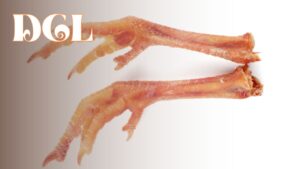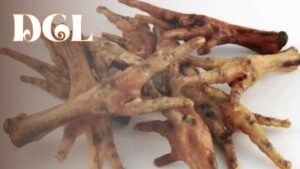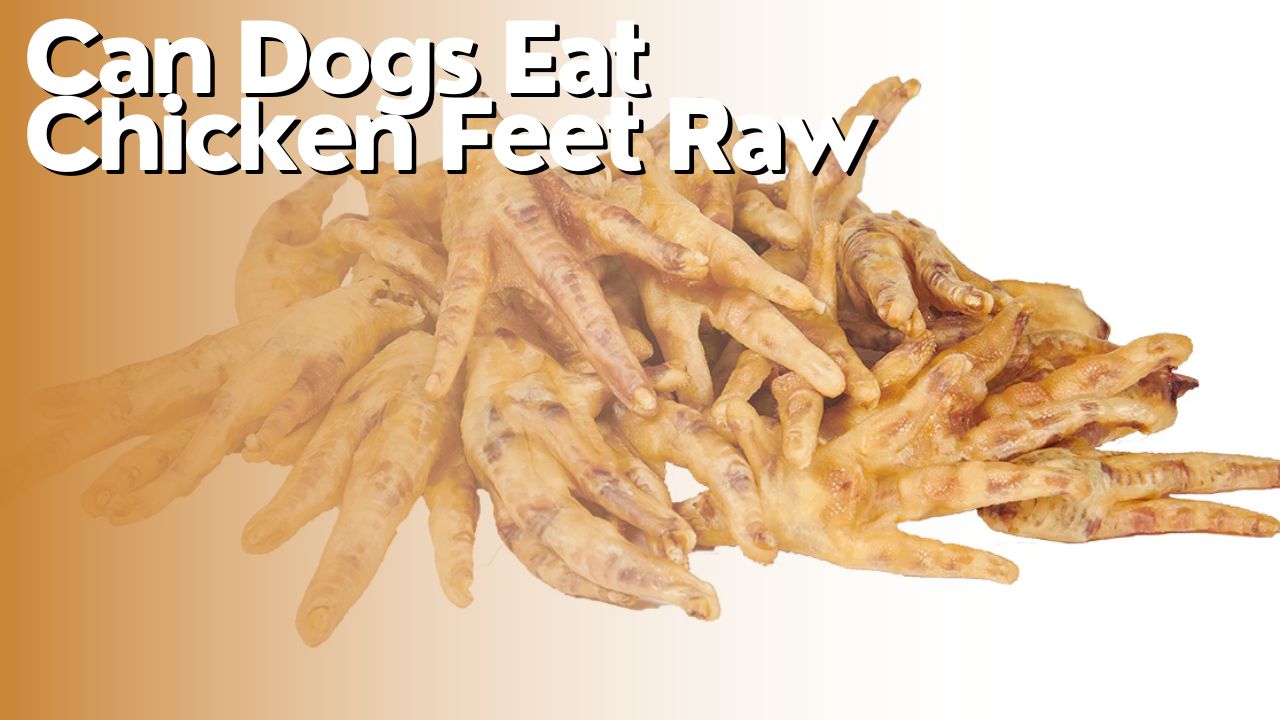I’ve always wondered if dogs can safely eat chicken feet raw. After all, they seem to enjoy chewing on bones and other tough treats.
In this article, we’ll explore the nutritional benefits of chicken feet for dogs, as well as the potential risks of feeding them raw. I’ll also provide tips on how to safely prepare and introduce chicken feet into your dog’s diet.
If you’re curious about alternative treats and supplements for your furry friend, stay tuned as we delve into that too.
Nutritional Benefits of Chicken Feet for Dogs
You can feed your dog raw chicken feet because they provide numerous nutritional benefits. As a dog owner, I have done extensive research on the topic and consulted with my veterinarian to ensure that I am making the best choices for my furry friend’s diet.
Chicken feet are a great source of protein, which is essential for building and repairing tissues. They also contain essential amino acids, such as glycine and proline, which help support joint health and strengthen connective tissues.
Another benefit of feeding your dog raw chicken feet is that they are rich in glucosamine and chondroitin, which are natural compounds that promote healthy joints and reduce the risk of arthritis. These compounds can be especially beneficial for older dogs or those prone to joint issues. Additionally, chicken feet are a good source of calcium and phosphorus, which are vital for maintaining strong bones and teeth.
Feeding your dog raw chicken feet can also be beneficial for their dental health. The act of chewing on the feet helps remove plaque and tartar from their teeth, promoting good oral hygiene and reducing the risk of gum disease.
It is important to note that while chicken feet can be a nutritious addition to your dog’s diet, they should be given in moderation and as part of a balanced meal plan. Always consult with your veterinarian to ensure that you are meeting your dog’s specific dietary needs.

Potential Risks of Feeding Dogs Raw Chicken Feet
Feeding dogs raw chicken feet carries certain risks that need to be considered.
One potential risk is bacterial contamination, as raw chicken can contain harmful bacteria like Salmonella or Campylobacter.
Another risk is the choking hazard that chicken feet present, as they contain small bones that can be easily swallowed and cause choking or intestinal blockage.
Therefore, it’s important to be aware of these risks and take appropriate precautions when feeding raw chicken feet to dogs.
Bacterial Contamination
If your dog eats raw chicken feet, they may be at risk of bacterial contamination. Raw chicken, including the feet, can contain harmful bacteria such as Salmonella and Campylobacter. These bacteria can cause food poisoning in dogs, leading to symptoms like vomiting, diarrhea, and dehydration.
Bacterial contamination is a serious concern because it not only affects the health of your dog but can also pose a risk to humans who come into contact with the bacteria through handling or consuming the raw chicken.
To minimize the risk of bacterial contamination, it is important to handle raw chicken feet with caution, ensuring proper hygiene and storage. It is also recommended to consult with your veterinarian before feeding your dog raw chicken feet to assess the potential risks and benefits for their specific health needs.
Choking Hazard
To minimize the risk of choking, it’s important to be aware of the potential hazards associated with raw chicken feet.
While dogs can eat chicken feet, they can pose a choking hazard if not properly prepared or if the dog gulps them down too quickly.
Chicken feet contain small bones and cartilage that can easily get stuck in a dog’s throat or digestive system, causing choking or blockages.
To reduce the risk, it’s recommended to thoroughly clean and cook the chicken feet before giving them to your dog. Cooking softens the bones and makes them less likely to splinter or get lodged in their throat.
Additionally, it’s important to supervise your dog while they eat chicken feet to ensure they chew them properly and don’t swallow them whole.
Safe Preparation and Handling of Chicken Feet for Dogs
When handling chicken feet for your dog, make sure to follow safe preparation and handling practices.
First, it is important to wash your hands thoroughly before and after handling chicken feet to prevent the spread of bacteria.
Next, ensure that the chicken feet you are using are fresh and have been properly stored to avoid any contamination.
It is also crucial to remove any excess fat or skin from the feet before feeding them to your dog, as these can be difficult for them to digest.
Additionally, it is recommended to cook chicken feet before giving them to your dog, as raw chicken can potentially contain harmful bacteria such as salmonella.
By cooking the chicken feet, you can eliminate any potential risks and ensure your dog’s safety.
Remember to always supervise your dog while they are eating chicken feet to prevent any choking hazards.
By following these safe preparation and handling practices, you can confidently incorporate chicken feet into your dog’s diet and provide them with a healthy and nutritious treat.
Introducing Chicken Feet into Your Dog’s Diet
After learning about the safe preparation and handling of chicken feet for dogs, I was excited to introduce this nutritious treat into my furry friend’s diet. Introducing chicken feet to your dog’s diet can provide them with a range of health benefits.
First and foremost, chicken feet are a natural source of glucosamine and chondroitin, which are essential for maintaining joint health and mobility. As dogs age, their joints can become stiff and painful, and incorporating chicken feet into their diet can help alleviate these issues. Additionally, chicken feet are rich in protein, which is crucial for muscle development and repair.
When introducing chicken feet, it’s important to start slowly and monitor your dog’s reaction. Begin by offering them a small piece and observe how they chew and digest it. If your dog enjoys the taste and has no adverse reactions, you can gradually increase the amount given.
To ensure safety, always supervise your dog while they’re eating chicken feet to prevent choking or any other potential hazards. It’s also crucial to source high-quality chicken feet from reputable sources to avoid any contamination or harmful additives.
Overall, incorporating chicken feet into your dog’s diet can be a beneficial and enjoyable addition. Just remember to introduce them gradually, monitor your dog’s response, and prioritize their safety at all times.
Alternative Treats and Supplements for Dogs
When it comes to treating my dog, I like to offer a variety of healthy and safe options. From dental chews to frozen treats, there are plenty of alternatives to chicken feet.
However, it’s important to consult with your veterinarian for personalized advice on what treats and supplements are best for your furry friend’s specific needs.

Variety of Healthy and Safe Treat Options
There are many healthy and safe treat options available for dogs. As a dog owner, I want to make sure that I provide my furry friend with the best options for their health and happiness.
Here are three great treat options that are both delicious and beneficial for dogs:
- Carrots: Not only are carrots low in calories, but they also provide a crunchy texture that dogs love. They are packed with vitamins and minerals that promote good eye health and a strong immune system.
- Blueberries: These little berries are a superfood for dogs. They are rich in antioxidants, which help fight off free radicals and reduce inflammation. Plus, they are a tasty and refreshing treat for dogs to enjoy.
- Sweet potatoes: Sweet potatoes are a great source of dietary fiber and are easy to digest. They are also a good source of vitamins A and C, which support a healthy immune system. Plus, they make a great chewy treat that dogs can enjoy for hours.
Overall, there are plenty of healthy and safe treat options for dogs to enjoy. By incorporating these treats into their diet, you can ensure that your furry friend stays happy and healthy.
Consult with Your Veterinarian for Personalized Advice
To get personalized advice for your dog’s treat options, consult with your veterinarian. They are the best source of information when it comes to your pet’s specific needs and health conditions. Your veterinarian will be able to assess your dog’s overall health and make recommendations based on their individual requirements.
They can provide guidance on the safety and suitability of feeding your dog raw chicken feet or any other treats. While raw chicken feet can be a natural and nutritious option for some dogs, it is important to consider factors such as your dog’s age, size, and any potential allergies or sensitivities they may have.
Your veterinarian can help you determine if raw chicken feet are appropriate for your dog and provide alternatives if necessary.
Frequently Asked Questions
Can dogs eat cooked chicken feet?
Yes, dogs can eat cooked chicken feet. They are a great source of protein and can be a healthy and tasty addition to their diet. Just make sure to remove any bones before feeding.
How often should I feed my dog chicken feet?
I feed my dog chicken feet once or twice a week. It’s important to remember that moderation is key, as too much chicken feet can lead to an unbalanced diet.
Are chicken feet a suitable treat for puppies?
Chicken feet can be a suitable treat for puppies. They are a natural source of glucosamine and chondroitin, which support joint health. However, it’s important to ensure they are fully cooked to avoid any potential bacterial contamination.
Can chicken feet cause any digestive issues in dogs?
Chicken feet can potentially cause digestive issues in dogs due to their high bone content. It’s important to monitor your dog closely after feeding them chicken feet raw and consult with a veterinarian if any problems arise.
What are some alternative treats or supplements I can give my dog instead of chicken feet?
There are several alternative treats and supplements I can give my dog instead of chicken feet. Some options include carrots, apples, sweet potatoes, and commercially available dog treats specifically designed for dental health.
Conclusion
In conclusion, I’ve learned that while dogs can eat chicken feet raw, there are potential risks involved.
Raw chicken feet can provide nutritional benefits for dogs, but it’s important to ensure safe handling and preparation.
Introducing chicken feet into your dog’s diet should be done gradually and in moderation.
If you’re unsure about feeding raw chicken feet, there are alternative treats and supplements available that can provide similar nutritional benefits.
Ultimately, it’s best to consult with a veterinarian to determine the best approach for your dog’s specific dietary needs.


